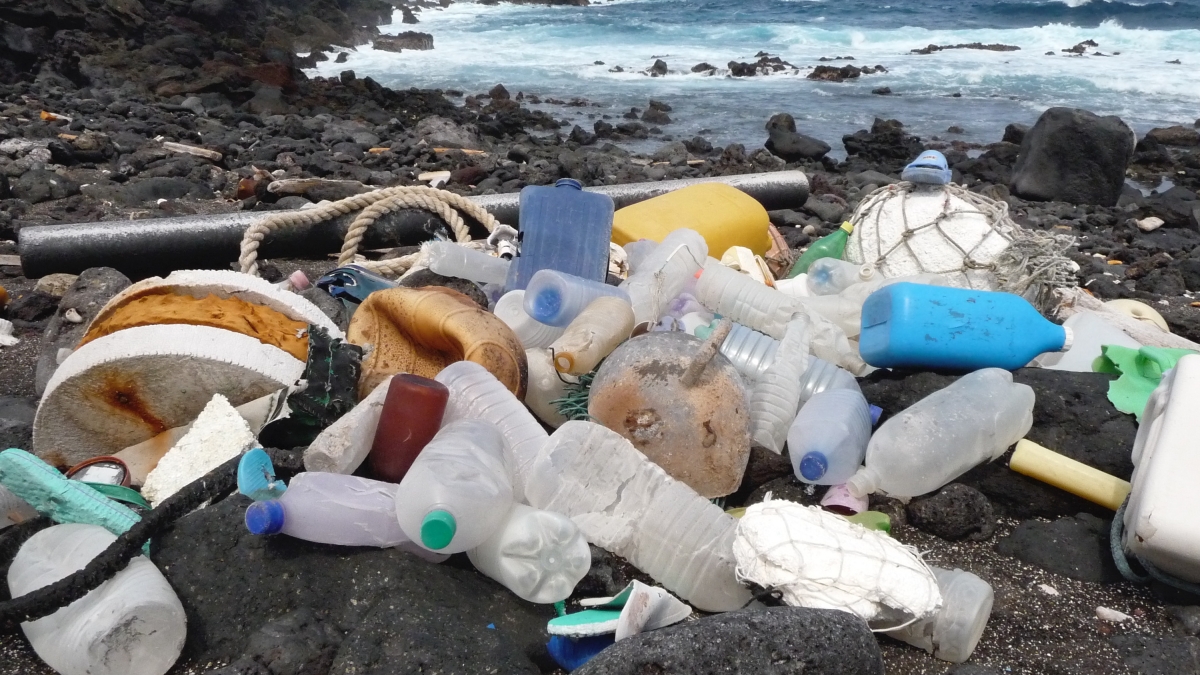In January 2018, China stopped accepting most plastic recyclables from Western nations. Within days, there was no hiding just how much plastic nations were producing and consuming. Piles of plastic sprang up in Britain, Canada, the United States and elsewhere. Other Eastern nations began banning the import of plastic waste. Governments worldwide are now scrambling for solutions to mitigate the growing problem of plastic pollution.
Now a new study shows that despite global commitments to address plastic pollution, growth in plastic waste or “plastics emissions” continues to outpace reduction. What’s more, the study shows that even if governments around the world adhere to their ambitious commitments to curb plastic pollution, annual plastic emissions may increase more than sixfold by 2030.
The study, “Predicted growth in plastic waste exceeds efforts to mitigate plastic pollution,” published in the Sept. 18 issue of the journal Science, evaluated the level of effort needed to achieve a targeted global reduction in plastic pollution.
This is the first global analysis of the magnitude of the plastic pollution problem or an analysis of the relative impact of interventions, like banning plastic bags and straws, said Leah Gerber, professor of conservation science in Arizona State University’s School of Life Sciences and co-investigator on the study.
Plastics are slow to degrade, and even when they do, bits of them — known as microplastics — make their way into the aquatic food chain and eventually into humans. The Great Pacific Garbage Patch, located halfway between California and Hawaii, embodies the growing problem of plastic pollution. The patch is said to cover 1.6 million square kilometers, an area twice the size of Texas.
It’s estimated that 8 million metric tons of plastic waste enters the world’s oceans, lakes and rivers annually. The new study, based on mathematical models, estimates that by 2030, annual plastic waste of 173 countries may increase to 53 metric tons.
The study modeled future scenarios to achieve a global reduction target of less than 8 million metric tons by 2030 using existing mitigation strategies: reducing plastic waste, which includes bans on plastic; improving waste management; and environmental cleanup.
To reach that goal, the study found that a 25% to 40% reduction in plastic waste would be required; plastic waste management would have to increase from 6% to 60% in low-income economies; and a cleanup of 40% of annual plastic emissions would be needed.
The study’s findings emphasize that unless growth in plastic production and use is halted (an unlikely scenario), a fundamental transformation of the plastics economy is essential; that is, where end-of-life plastic products are valued rather than discarded as waste.
“There’s a lot of popular attention toward cleanup, but there hasn’t been as much attention to the fact that we’re still producing large quantities of plastic,” said Gerber. “And where there’s not good infrastructure, that plastic is making its way into marine and aquatic habitats.”
The study’s authors suggest that to achieve a substantial reduction in global plastic emissions requires meaningful policy change. Such changes include reducing or eliminating unnecessary plastics; establishing global limits for new plastics production; creating global standards that ensure plastics are recoverable and recyclable; and developing and scaling plastic processing and recycling technologies.
“In the U.S. we’re huge consumers of single-use plastic,” said Gerber. “I’m hopeful that our findings will get people to rethink these consumption patterns. Even here in Arizona, the choices we make impact the future of our oceans.”
The study’s lead authors are Stephanie Borrelle and David H. Smith, both postdoctoral research fellows at the University of Toronto, and Chelsea Rochman, assistant professor of ecology and evolutionary biology, University of Toronto.
In addition to Gerber, ASU researchers on the study include Beth Polidoro, associate professor of environmental chemistry and aquatic conservation in the New College of Interdisciplinary Arts and Sciences, and doctoral students Erin Murphy and Miranda Bernard.
This work was supported by the National Socio-Environmental Synthesis Center with funding received from the National Science Foundation.
More Environment and sustainability

Driving green desalination
Wilderness survival TV show hosts, pirates and water treatment researchers agree on one thing: Most natural water sources are not safe for drinking. Among the many potential risks is the high salt…

ASU preservation facility serves as test bed for rooftop heat mitigation
A roof coating that uses thermal energy storage materials from Arizona State University spinout EnKoat is halting the heat in several ASU buildings — including a section of the university’s largest…

ASU Carbon Summit displays sustainability leadership, collaboration and ... electric motorcycles
This month, a student-led initiative brought government officials, entrepreneurs and nongovernmental organizations under one roof to discuss sustainable carbon solutions. The annual Carbon…
